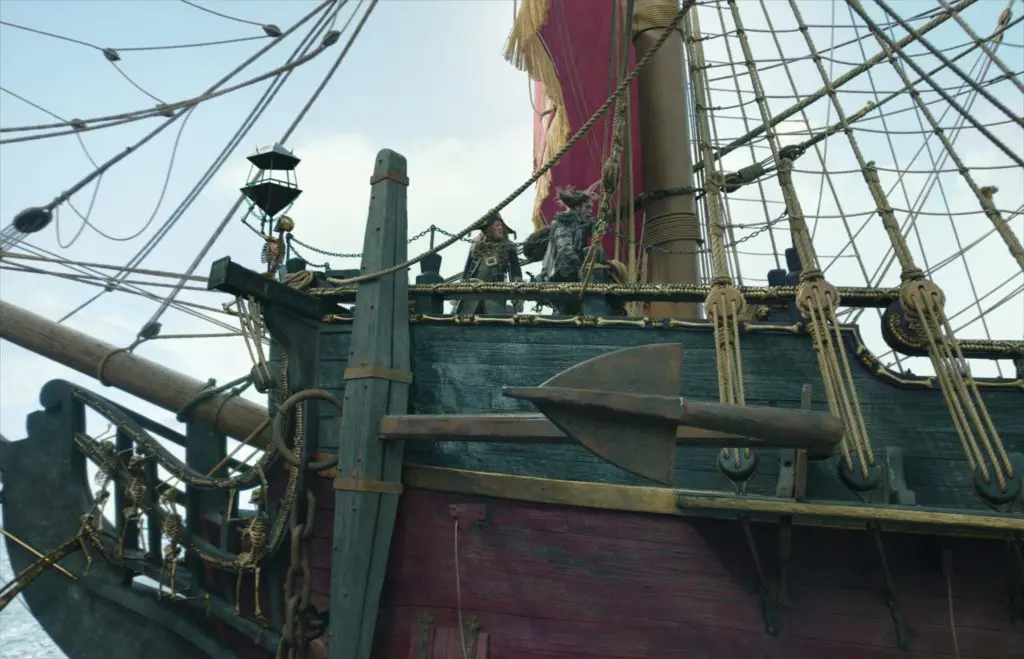Dead men might not tell tales, but those of us at the DAVE School do.
Written by Renee Dunlop
Dead men might not tell tales, but those of us at the DAVE School do. Let us share a little insight on MPC’s visual effects work on the latest film in the Pirate series, a task that took over 800 MPC artists in London, Montreal and Bangalore more than two years to complete. MPC undertook 1100 shots of ghostly pirates, sharks and birds, digital doubles, ship battles and rendered more water than they had ever tackled before.
SETTING SAIL

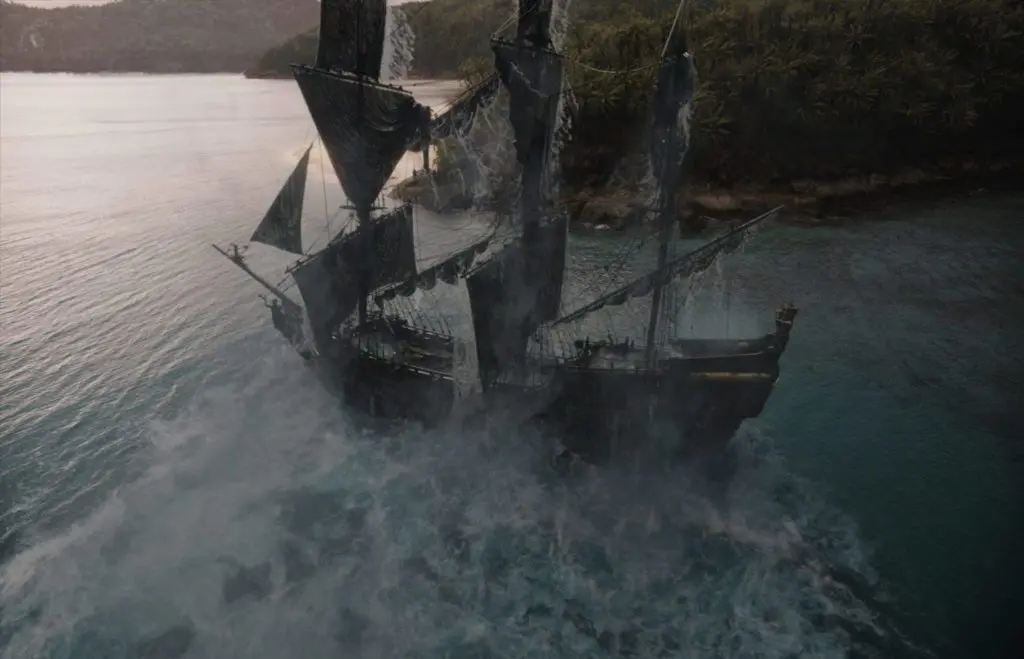
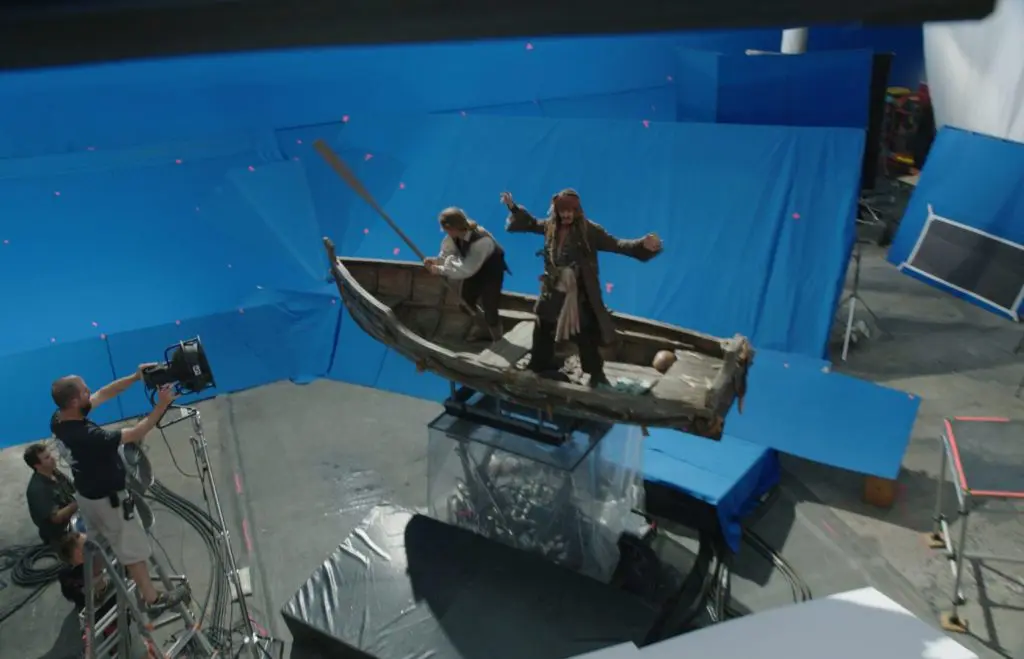
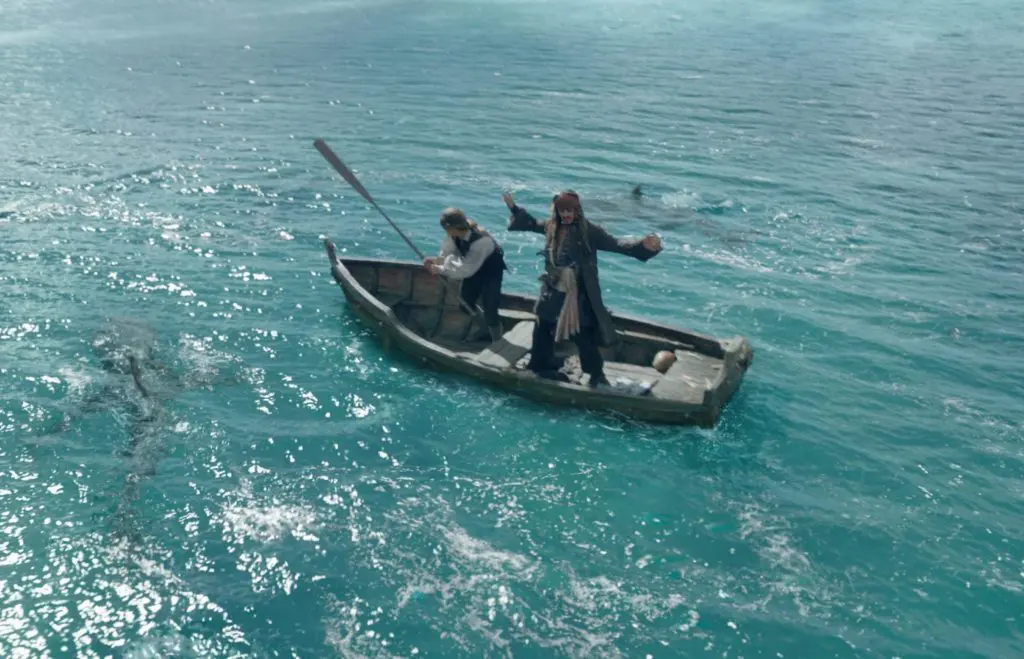
Principle photography used a dry dock where moving boat sets were built in front of a huge blue screen. CG work included five hero boats and many boat extensions, sails and rigging that matched onset photography as well as every version of digital water. The disintegrating and embattled computer generated ship models relied on MPC’s physics based destruction tool KALI. The ocean and complex water simulations were almost entirely CG and were so demanding MPC’s RnD team created new tools to handle the work that included interactive crashing waves, sparkling oceans, a deluge of drips and splashes, and the ocean chasm.
The films’ final scenes required the digital sea to split open into a crashing watery gorge, a task that took nearly a year to perfect. Artists toiled to create the powerful display of the chasm walls, and how they moved, crested and interacted with the ships.
Due to a magical spell, the pirates are trapped in Devil’s Triangle, a rocky environment that, when the spell is broken, collapses into the sea. This sequence required complex rigid body and fluid simulations, extensive matte painting, and 3D environment work.
GHOSTLY CHARACTERS
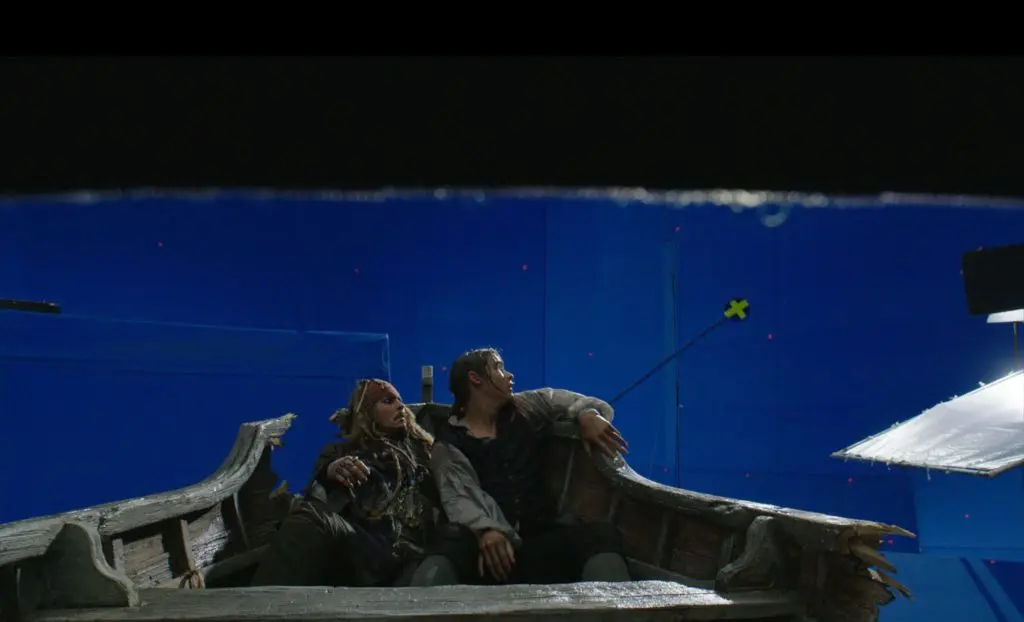
The villainous Captain Salazar (Javier Bardem) pursues Jack Sparrow (Johnny Depp) as he searches for the trident used by Poseidon
Pictured: Johnny Depp (Captain Jack Sparrow) and Brenton Thwaites (Henry Turner)
VFX Still
© Disney Enterprises, Inc. All Rights Reserved.
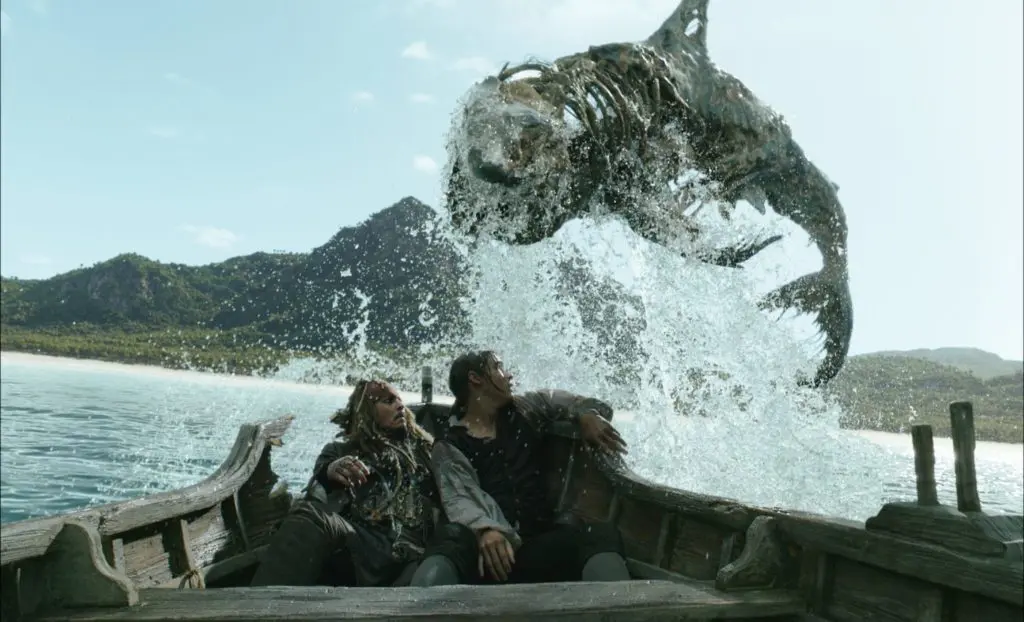
The villainous Captain Salazar (Javier Bardem) pursues Jack Sparrow (Johnny Depp) as he searches for the trident used by Poseidon
Pictured: Johnny Depp (Captain Jack Sparrow) and Brenton Thwaites (Henry Turner)
VFX Still
© Disney Enterprises, Inc. All Rights Reserved.
Javier Bardem’s character Captain Salazar is a long-dead pirate who escapes the Devil’s Triangle with his crew, seeking revenge on all pirates and in particular, Captain Jack Sparrow. Several characters were fully CG, including digital hero characters, three of the crew with invisible limbs, ghost sharks, and birds.
Directors Joachim Ronning and Espen Sandberg wanted the characters to appear as they died, complete with the decaying injuries acquired during their final battle and the years of moldering in their watery grave. This required MPC’s RnD team to create new tools for cloth and hair simulations. Salazar sports a hole in his head, ghostly eyes and cracking skin, accomplished by digitally enhancing his prosthetics and practical makeup with a massive CG wound.
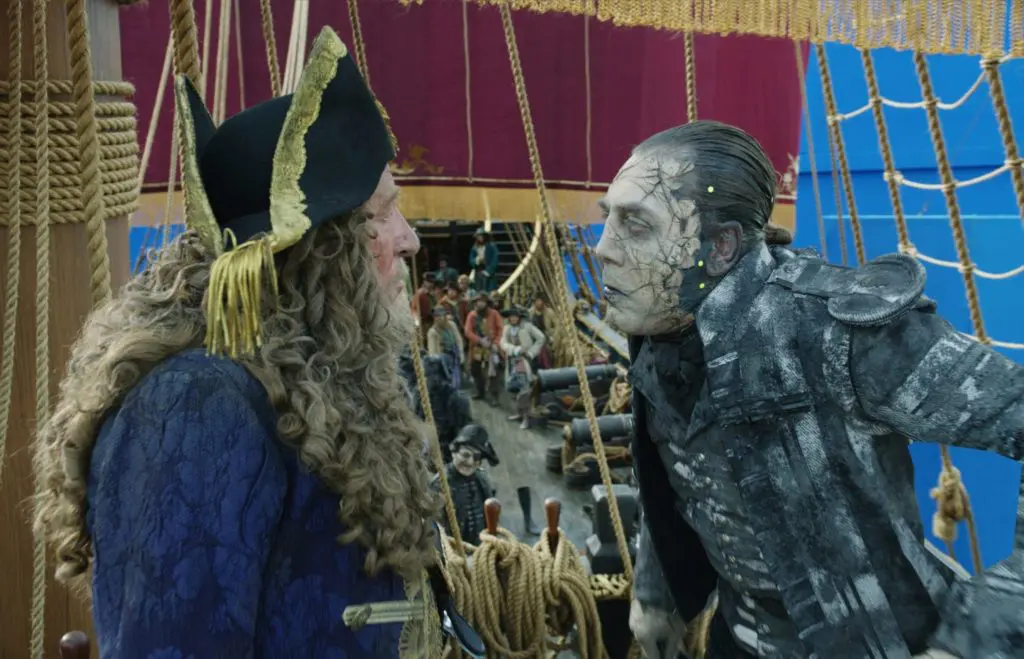
The villainous Captain Salazar (Javier Bardem) pursues Jack Sparrow (Johnny Depp) as he searches for the trident used by Poseidon VFX Still © Disney Enterprises, Inc. All Rights Reserved.
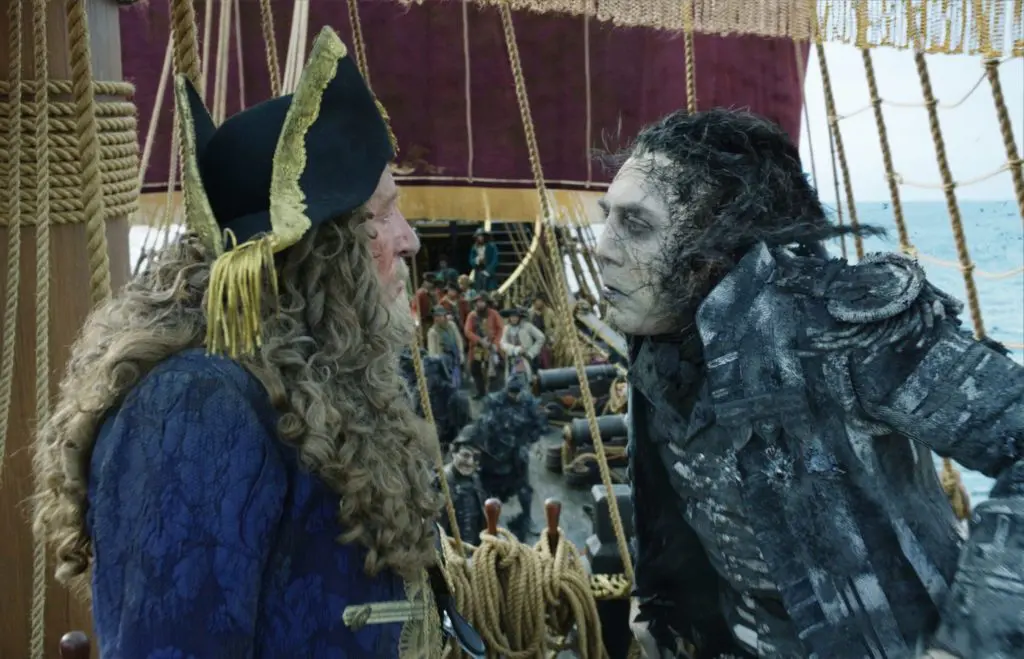
The villainous Captain Salazar (Javier Bardem) pursues Jack Sparrow (Johnny Depp) as he searches for the trident used by Poseidon VFX Still © Disney Enterprises, Inc. All Rights Reserved.
Hair and clothing maintained the behavior of being underwater, permanently floating in slow-motion condition. First, actors were filmed wearing snugly fitting costumes and close cropped hair, then the team of CG artists rotoanimated the actors, created digital doubles complete with CG enhanced injuries and resimmed hair and clothes.
Using Maya’s nHair and MPC’s proprietary software Furtility, the team of artists created thousands of hair strands that naturally collide and interact through physics simulations, yet were still directable enough to control the performance. It was still challenging to believably merge the hair performance to the actor who was moving in reel time. The constant flowing movement was a particularity difficult challenge since the hair simulation needed to be tackled as an entire sequence when normally it’s handled on a shot-by-shot basis. The effects team solved the problem by handling the animation in beats, much like a character performance.
Costumes required a similar style of movement, with the added visual of constant disintegration. Characters were subtly surrounded by clouds of debris, tiny flecks of clothing floating from their disintegrating clothing.
Salazar’s ship, the Silent Mary, was partially built as a practical set for closeup shots, while the shots at sea were digitally generated. It was as battered as the ghostly crew, filled with holes, draped in rigging, tattered sails, and seaweed. The hull was blown open and rotted out, with it’s rib-like timbers conveying a menacing character in it’s own right.
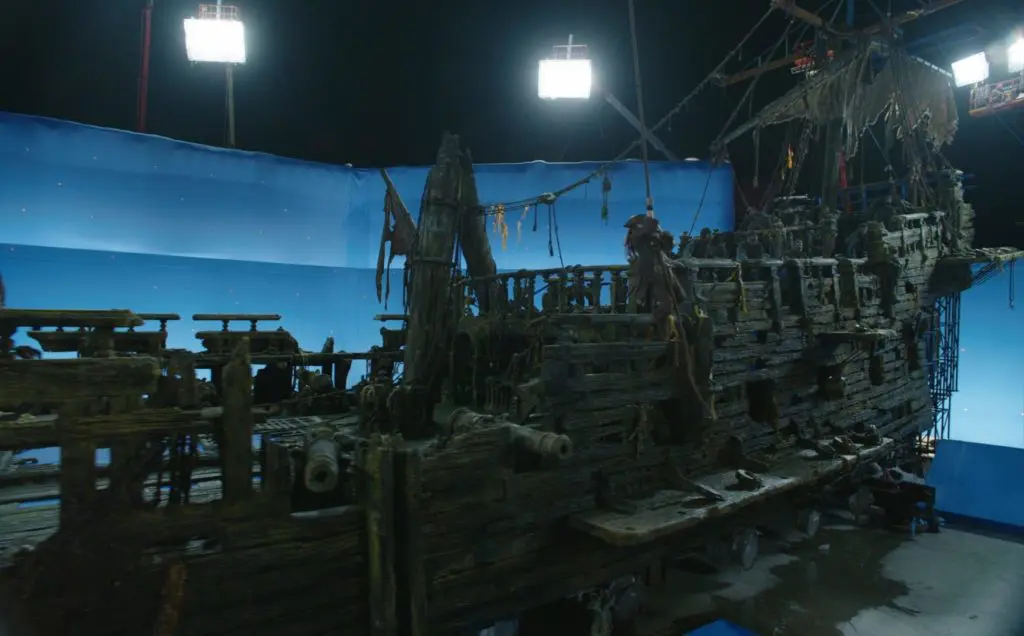
The villainous Captain Salazar (Javier Bardem) pursues Jack Sparrow (Johnny Depp) as he searches for the trident used by Poseidon VFX Still © Disney Enterprises, Inc. All Rights Reserved.
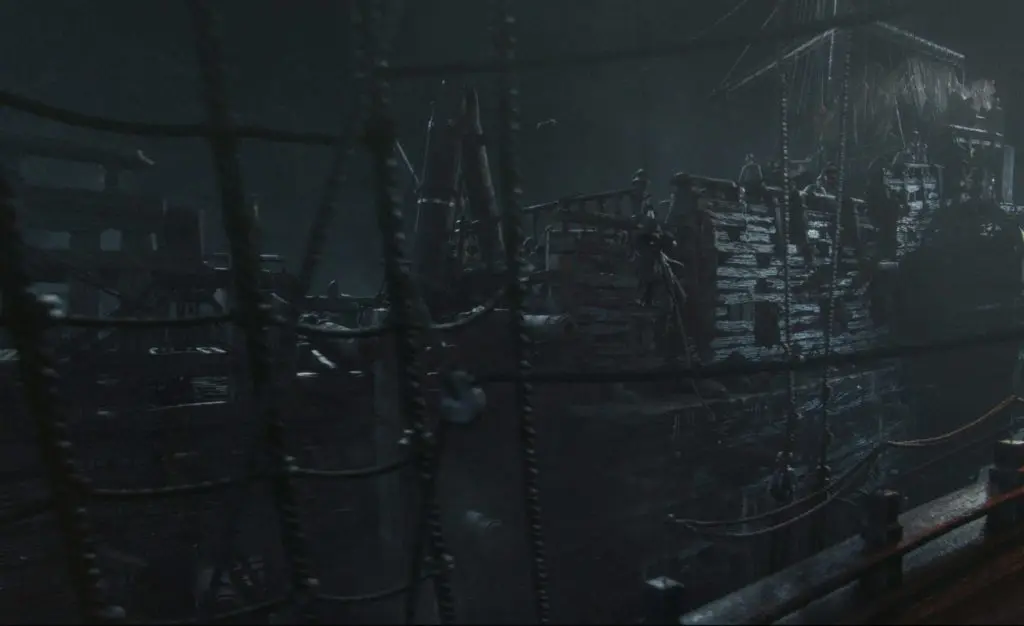
The villainous Captain Salazar (Javier Bardem) pursues Jack Sparrow (Johnny Depp) as he searches for the trident used by Poseidon VFX Still © Disney Enterprises, Inc. All Rights Reserved.
DE-AGING JOHNNY DEPP – Bonus Report
As Salazar shares the source of his rage he flashes back to a scene when Captain Jack Sparrow was in his youth. To achieve the illusion of Depp as a young man, the process of “de-aging” was applied. This was not handled by MPC. De-aging is a tedious, unforgiving process that involves examining images of the actor in their youth, locating an actor with a similar facial structure, filming each actor identically performing the same scene, then combining the two with a dose of CG, frame by frame.
In more detail, both actors are costumed identically. Makeup is applied to the key actor to make them appear younger. Tracking markers are applied to both actors’ faces for reference. The key actor is asked to perform the scene, then the second actor with the similar facial structure acts it out again, mimicking the key actors’ performance. These images are then combined frame by frame, along with CG tweaking and enhancement. It is a grueling process that takes many, many months, and must be done well since any error will stand out. The final images often need some amount of reshaping facial features, such as lips or jawline, requiring a deep knowledge of human facial physiology.
See more about Pirates of the Caribbean: Dead Men Tell No Tales
Go Behind the Scenes of Pirates of the Caribbean: Dead Men Tell No Tales (2017)
Pirates of the Caribbean 5 – Dead men tell no tales – Making and VFX
Pirate Of The Caribbean Johnny Depp Make Up
About The DAVE School
The DAVE School was founded on June 8, 2000 by two Industry executives looking to create #CareerReady artists with a practical animation school. Today, The DAVE School offers specialized training in Visual Effects and Game Production with extensive practice under industry level supervision.
Located on the backlot of Universal Studios Florida® in Orlando, The DAVE School has an 18,000 square foot facility that includes learning and interactive labs, a dedicated Virtual and Real-Time production stage, a Vicon motion capture system, 3D printing and VR/AR labs and secure student access 7 days a week.
NUC University (NUC) is an accredited institution and a member of the Middle States Commission on Higher Education (MSCHE or the Commission) www.msche.org. NUC’s NUC University – IBC Technical Division (NUC-IBC), NUC University – Florida Technical College (NUC-FTC), The Digital Animation & Visual Effects School (The DAVE School), Columbia Central University (CCU), and Hillsboro Aero Academy (HAA) are included in this accreditation. NUC’s accreditation status is Accreditation Reaffirmed. The Commission’s most recent action on the institution’s accreditation status on 2019 was to reaffirm accreditation. MSCHE is recognized by the U.S. Secretary of Education to conduct accreditation and pre-accreditation (candidate status) activities for institutions of higher education including distance, correspondence education, and direct assessment programs offered at those institutions. The Commission’s geographic area of accrediting activities is throughout the United States.


